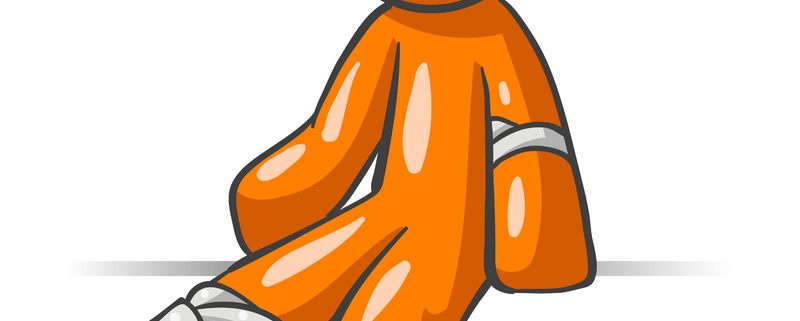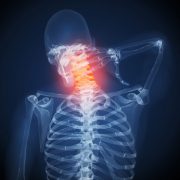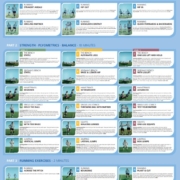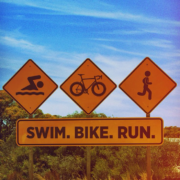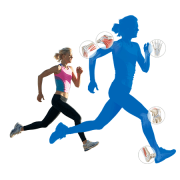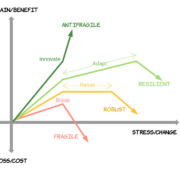Prevent Sports Injury for Kids
Major Recommendations
Injury Surveillance
- Research should be devoted to improved understanding of the prevalence, incidence, and economic cost of overuse injuries among pediatric athletes in the United States and should focus on prevention and treatment of these overuse injuries (Mountjoy et al., 2008; “Sports and children,” 1998). Evidence Category: C
- Funding and support for research into the prevalence, incidence, prevention, and treatment of pediatric overuse injuries should be increased (Mountjoy et al., 2008; “Sports and children,” 1998). Evidence Category: C
- All athletic health care providers should participate in injury-surveillance efforts, including accurate documentation in keeping with good clinical practice, and Web-based and other registries (Mountjoy et al., 2008; “Sports and children”, 1998; Almquist et al., 2008). Evidence Category: C
- Resources and training for athletic health care providers (e.g., certified athletic trainer, physician, physical therapist) to collect high-quality injury data must be developed (Mountjoy et al., 2008; “Sports and children,” 1998). Evidence Category: C
Preparticipation Physical Examination
- The preparticipation physical examination (PPE) should be used as a means to screen each athlete for potential risk factors, including injury history, stature, maturity, joint stability, strength, and flexibility, which may be important for preventing recurrent injuries (American College of Sports Medicine, 1993; Dalton, 1992; Hergenroeder, 1998; Caine, DiFiori, & Maffulli, 2006). Evidence Category: C
- Children and adolescents with noted deficits on the PPE should be referred to appropriate medical specialists and health care providers (e.g., physician specialist, certified athletic trainer, physical therapist) for further evaluation and corrective rehabilitation (American College of Sports Medicine, 1993; Hergenroeder, 1998). Evidence Category: C
- Robust documentation and injury-surveillance systems need to be developed to link PPE findings with injury, thereby identifying which measured factors may confer increased risk (Almquist et al., 2008; Bernhardt & Roberts, 2010). Evidence Category: C
- More research is needed to improve the effectiveness of the PPE, including strategies to implement the beneficial components more consistently and efficiently in the context of broader health-supervision and morbidity-prevention efforts for adolescents. (Almquist et al., 2008; Bernhardt & Roberts, 2010). Evidence Category: C
Identification of Risk Factors
- Arm pain, fatigue, and decreased throwing performance should be recognized by athletes, coaches, parents, and medical personnel as early warning signs of potential overuse injuries in pediatric throwers (Lyman et al., 2001; Olsen et al., 2006). Evidence Category: A
- Decreasing the volume of pitches as a means to prevent overuse injuries in throwing athletes is recommended (Olsen et al., 2006; Lyman et al., 2002; Andrews & Fleisig, 1996). Evidence Category: A
- Health care professionals should recognize that certain anatomic factors may predispose the athlete to overuse injury, including leg-length discrepancies, genu valgus, genu varus, pelvic rotation, and generalized joint hypermobility (DiFiori, 2002; Lysens et al., 1989; Klemp, Stevens, & Isaacs, 1984; Acasuso Diaz, Collantes Estevez, & Sanchez Guijo, 1993; Gedalia & Press, 1991). Evidence Category: C
Coach Education and Medical Supervision
- Pediatric athletes, parents, and coaches should be educated about the signs and symptoms of overuse injuries, and athletes should be instructed to notify an adult when such symptoms occur (Lyman et al., 2001; Olsen et al., 2006; Hodson, 1999). Evidence Category: A
- Coaches of youth and high school sports should have certifications or credentials identifying specific knowledge in areas related to sports safety, sports techniques and skills, psychosocial aspects of childhood and adolescence, growth and development, and common health and medical concerns (“Sports and children,” 1998; Caine, DiFiori, & Maffulli, 2006; Ransone & Dunn-Bennett, 1999; Valovich McLeod et al., 2008). Evidence Category: C
- Organized youth and interscholastic sports should be supervised by adults, ideally those with knowledge and training in monitoring for overuse injuries (American College of Sports Medicine, 1993; “Sports and children,” 1998). Evidence Category: C
- Medical personnel with training and education in pediatric sports injuries should be identified as referral sources to recognize, evaluate, and rehabilitate suspected overuse injuries (Almquist et al., 2008; Caine, DiFiori, & Maffulli, 2006). Evidence Category: C
Sport Alterations
- Emerging evidence indicates that the sheer volume of sport activity, whether measured as number of throwing repetitions (Lyman et al., 2001; Olsen et al., 2006; Lyman et al., 2002; Andrews & Fleisig, 1996; Carson & Gasser, 1998) or quantity of time participating (Ohta-Fukushima et al., 2002; Loud et al., 2005), is the most consistent predictor of overuse injury. Efforts should be made to limit the total amount of repetitive sport activity engaged in by pediatric athletes to prevent or reduce overuse injuries. Evidence Category: B
- Although injury thresholds are yet to be determined for specific activities and age ranges, some data suggest a general guideline of no more than 16 to 20 hours per week of vigorous physical activity by pediatric athletes (Loud et al., 2005). Evidence Category: B
- Alterations or modifications to the existing rules for adult sports may help to prevent overuse injuries in pediatric athletes and should be considered by coaches and administrators for sports in which youth rules are lacking (American College of Sports Medicine, 1993; “Sports and children,” 1998; Brenner, 2007). Evidence Category: C
- Adults should ensure that pediatric athletes play only 1 overhead throwing sport at a time, avoid playing that sport year-round, and use caution when combining pitching with other demanding throwing positions (e.g., pitch 1 day and catch the next day) to ensure adequate time for recovery (Cassas & Cassettari-Wayhs, 2006; Carson & Gasser, 1998; Benjamin & Briner, 2005). Evidence Category: C
- Parents and coaches should restrict the use of breaking pitches in order to prevent pitching-related arm injuries (Lyman et al., 2002). If an individual pitcher can throw breaking pitches on a limited basis and remain symptom free, then it may be allowed; however, if the use of this pitch precedes the development of any throwing-related symptoms, it should be immediately terminated and the athlete should seek medical attention. Evidence Category: C
- Pitching limits should be established for players 9 to 14 years old: full-effort throwing (i.e., in competition) should be limited to 75 pitches per game, 600 pitches per season, and 2000 to 3000 pitches per year (Lyman et al., 2002; American Sports Medicine Institute, 2009). Evidence Category: B
- Pitchers between 15 and 18 years of age should throw no more than 90 pitches per game and pitch no more than 2 games per week (Andrews & Fleisig, 1996; American Sports Medicine Institute, 2009). Evidence Category: C
See Table 6, “Recommendations for Pitch Counts on the First 4 Days After a Pitching Event”; Table 7, “Suggested Sport-Modification Recommendations for Adolescent Pitchers”; and Table 8, “Developmental Progression for Pediatric Swimmers,” in the original guideline document for more recommendations.
Training and Conditioning Programs
- Preseason and in-season preventive training programs focusing on neuromuscular control, balance, coordination, flexibility, and strengthening of the lower extremities are advocated for reducing overuse injury risk, especially among pediatric athletes with a previous history of injury (Emery et al., 2005; Junge et al., 2002; Olsen et al., 2005). Evidence Category: A
- All pediatric athletes should begin participating in a general fitness program, emphasizing endurance, flexibility, and strengthening, at least 2 months before the sport season starts (American College of Sports Medicine, 1993; DiFiori, 2002; Flynn, Lou, & Ganley, 2002; Faigenbaum & Micheli, 2000). Evidence Category: C
- Pediatric athletes should have at least 1 to 2 days off per week from competitive practices, competitions, and sport-specific training (Mountjoy et al., 2008; Brenner, 2007). Coaches and administrators should consider these required days off when organizing season schedules. Evidence Category: C
- Pediatric athletes should participate on only 1 team of the same sport per season when participation on 2 or more teams of the same sport (e.g., high school and club) would involve practices or games (or both) more than 5 days per week (Brenner, 2007). Evidence Category: C
- Progression of training intensity, load, time, and distance should only increase by 10% each week to allow for adequate adaptation and to avoid overload (American College of Sports Medicine, 1993; Brenner, 2007). Evidence Category: C
- After injury or delayed time without throwing, pediatric throwing athletes should pursue a gradual return-to-throwing program over several weeks before beginning or resuming full throwing activities (Cassas & Cassettari-Wayhs, 2006; Benjamin & Briner, 2005). Evidence Category: C
Delayed Specialization
- Pediatric athletes should be encouraged to participate in multiple sports and recreational activities throughout the year to enhance general fitness and aid in motor development (American College of Sports Medicine, 1993; “Sports and children,” 1998). Evidence Category: C
- Pediatric athletes should take time off between sport seasons and 2 to 3 nonconsecutive months away from a specific sport if they participate in that sport year-round (Brenner, 2007). Evidence Category: C
- Pediatric athletes who participate in simultaneous (e.g., involvement in high school and club sports at the same time) or consecutive seasons of the same sport should follow the recommended guidelines with respect to the cumulative amount of time or pitches over the year (Brenner, 2007). Evidence Category: C
Conclusions
The major objective in managing repetitive or training injuries in athletes of any age should be to determine risk factors for injury and identify steps to prevent the occurrence of these injuries. Knowledge is growing about risk factors for the occurrence of both acute traumatic injuries and repetitive microtrauma overuse injuries in adults, particularly in such activities as military training, work activities, and sports. However, too little is known about risk factors for overuse injury in pediatric athletes.
Injury surveillance in young athletes should be improved to record the occurrence of injury and the determination of associated risk factors, as well as epidemiologic data (e.g., age, sex, height, mass, and, if possible, Tanner stage). Epidemiologic studies in specific environments in pediatric populations would add greatly to the understanding of the risk associated with particular sport activities, thus providing a foundation for future studies of prevention and treatment efficacy.
Information Sourced from:
http://www.guideline.gov/content.aspx?id=38462&search=sports+injury

